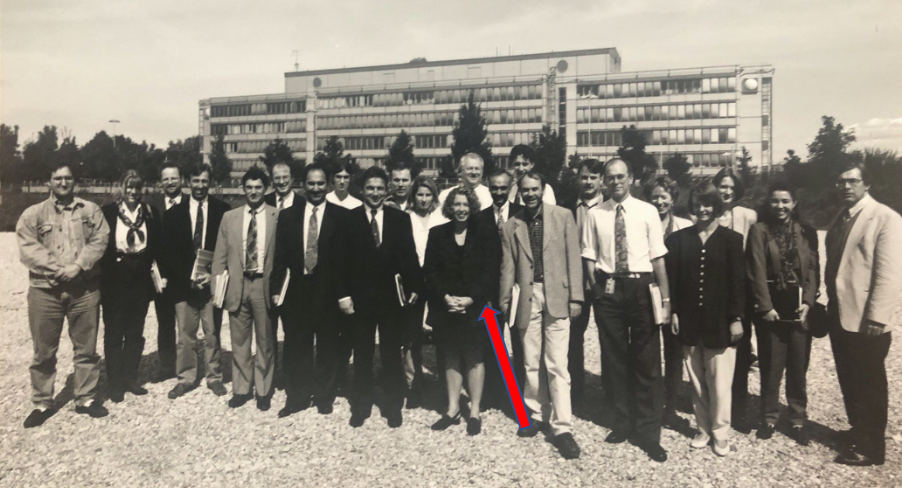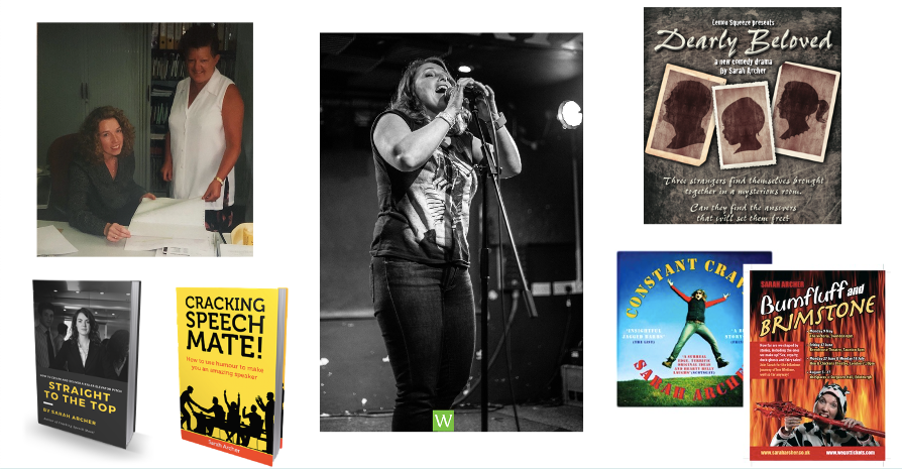How to Find and Use Your Stories to Maximise Impact, Engagement and Sales When You Speak…
Why You’re Here!
You already know that stories are powerful, and that’s why you’re here!
You probably also know that stories are:
- the antidote to the –big mistakes that switch people off when you speak–
- one of the key ingredients to standing out, making people care and making sales
It’s likely you understand — what stories are, and the different types you can use when you’re speaking…
BUT… there are some stories that are more powerful than others, and that’s what we’ll talk about right after I share this story of the first time I ever spoke in public…
The first time I spoke to an audience, there was a lot riding on it.
I was a 22-year-old English girl working for a big international company in Germany and I’d just been elected to be Chair of the Works Council, (which is kinda’ like a union but with less teeth).

Although, a lot of people had voted for me, there were also a lot that hadn’t…and they were pretty sceptical about whether I could do the job.
My first big test as leader was coming up. I had to speak in front of the whole company and respond to the management team at the annual employee meeting.
If I failed to deliver, I was pretty sure my older, male German Works Council colleagues would have been under pressure to kick me out of the role.
I’d never spoken before and this was the early 90s with a very young internet and no such thing as TED talks! So… I had to rely on books and CDs to help me put my talk together.
In amongst the books I got was one on After Dinner Speaking, and in it there were lots of short, funny, little stories that politicians, celebrities and sports people had told.
As I was reading through, I realised that a lot of them had a point to make and the message landed and stuck with me more effectively because it was in a story. I thought well if telling these little stories was good enough for these successful people, I’d use funny stories in my speech too.
I shared this with my Works Council colleagues …and they were less than impressed. I stood my ground, but said I’d resign if I messed it up.

The big day of the talk arrived, and I spent most of the morning in the toilet!
Eventually it was time for me to head to the meeting and as I entered the big restaurant area, I saw a sea of expectant faces amongst the hundreds of employees waiting. My heart was beating louder than a herd of stampeding buffalo as I sat down at the front. When the CEO finished sharing his report, he turned and nodded to me.
I stood up, took a deep breath and walked to the lectern and began my talk with a funny story.
And…it landed like a charm!
Everybody laughed and I convinced everyone, (including myself), with that speech, that I was capable of holding my own.
Through that experience, I learnt that stories are powerful, and over the years I’ve discovered that ones from my own life even more so.
Since that time stories and humour have been like a golden thread through everything, I’ve done… and I’ve learnt that my own personal stories from my life are the most powerful. I’ve used them in my corporate career, I’ve used them in stand-up comedy and as a writer.

Today, I use these snackable stories in pitches, videos, podcasts, webinars and presentations, to teach and inspire audiences and grow my business.
So… if your own stories are the best…
…the big question you might have now is how to find and use your personal stories to increase your impact and engagement when you speak?
That’s what we’re going to look at here.

Your memory is a mine of wonderful, authentic stories that will help you clarify your message, create ‘aha’ moments for your audience and show the ‘real’ you and that’s who people will connect with and trust.
So…how do you get them?
Well…the best way I found to collect them intentionally, is to take some time in a quiet place and ask yourself memory prompts.
When you ask these prompts, your mind will wander and after a while the stories will start to bubble to the surface allowing you to extract the gold.
Make some notes on these memories that come up, ready to be developed into story form.
Making Your Memories a Story
Next you take those notes and put some structure around them.
First you set the scene with a few descriptive details, and this helps people transport themselves into the story.
Next you share what happened, again sharing some descriptive details of what you saw, heard and felt, and then what the outcome was and what you learned from it.
Next stop is adding in some colour in the form of metaphors to bring the story alive for your audience and help them relate and remember what you’re sharing.
How to Use Your Stories
These anecdotes are great tools to illustrate teaching points and deal with any objections that people might have around your product or service, or their own ability to use it.
The thing is this… even if people buy into your product or service, it’s likely that they will still have doubts about whether it will work for them for a variety of reasons. Using anecdotes about you, your customers, or other subjects, will help to show these concerns are unfounded or easy to overcome.
Ideally, your stories should be around three to five minutes, including your intro and wrap up.
Oh, and don’t forget a call to action, where you invite them to engage with the story, or take some action in a way that builds your relationship with them.
There you go…that’s how you use your stories to maximise impact, engagement when you speak.
Putting this into Action!
The reason I advocate stories, (especially personal ones), so much as a speaking coach is because for me, they are a critical component of speaking authentically.
I am on a mission to get people to discover the gems in their mind and turn them into stories that will make their speaking sparkle.
That’s why I’ve created a FREE challenge to do just that.
In my 5 Day Snackable Story Challenge I’ll be guiding you through all of these steps with a mix of training videos, resources and live coaching.
You’ll get memory prompts to help you’ll uncover your own authentic stories; I’m also going to show you step by step how to use imagery and metaphors to make your stories super engaging and I’ll be giving you tools for sharing them powerfully with your audience.
So, if you want to build your confidence, free your voice and stand out from the crowd then head over to https://www.saraharcher.co.uk/challenge to find out more and start your challenge!

See you there!
By Sarah Archer
